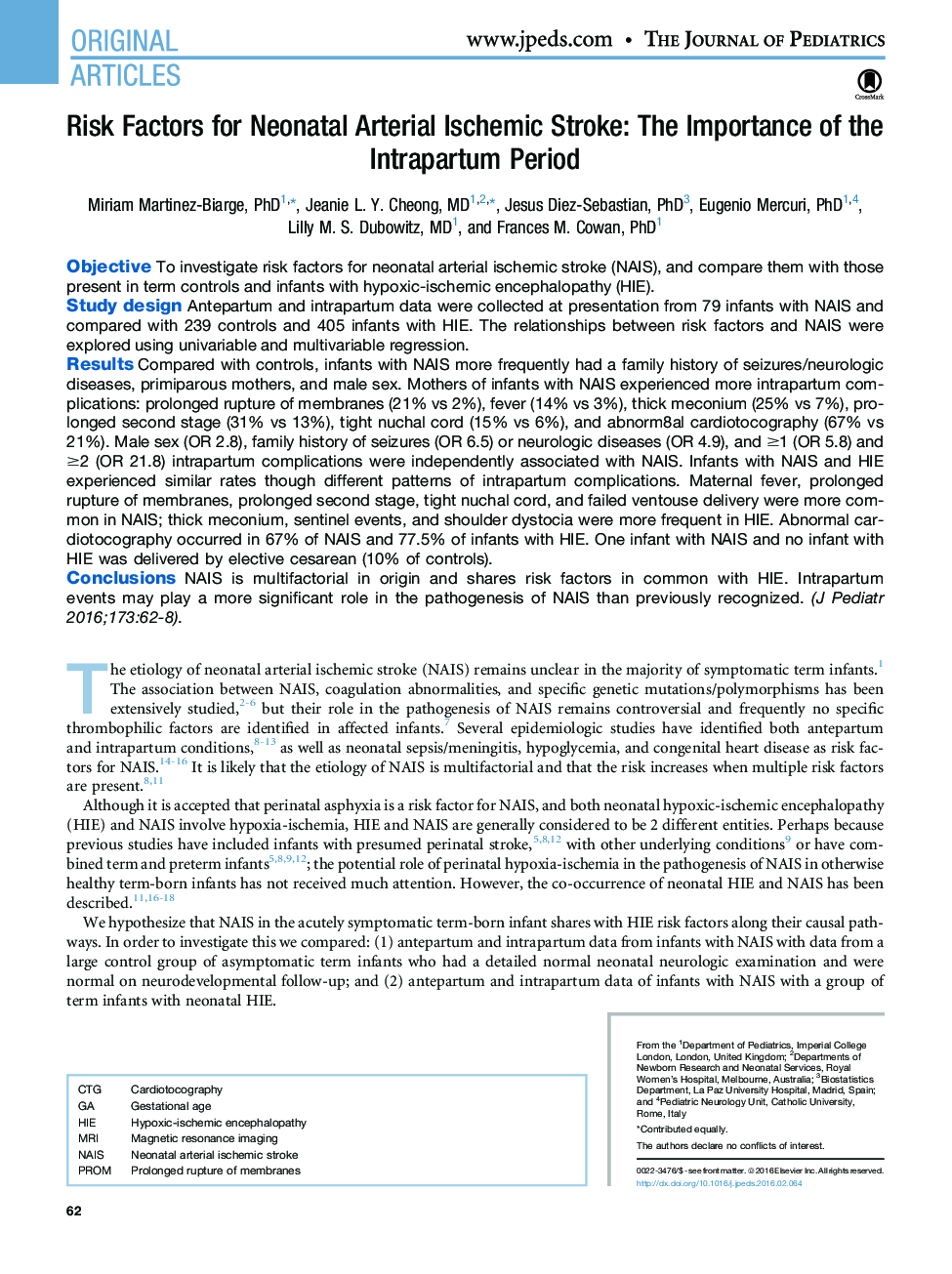| Article ID | Journal | Published Year | Pages | File Type |
|---|---|---|---|---|
| 6219489 | The Journal of Pediatrics | 2016 | 8 Pages |
ObjectiveTo investigate risk factors for neonatal arterial ischemic stroke (NAIS), and compare them with those present in term controls and infants with hypoxic-ischemic encephalopathy (HIE).Study designAntepartum and intrapartum data were collected at presentation from 79 infants with NAIS and compared with 239 controls and 405 infants with HIE. The relationships between risk factors and NAIS were explored using univariable and multivariable regression.ResultsCompared with controls, infants with NAIS more frequently had a family history of seizures/neurologic diseases, primiparous mothers, and male sex. Mothers of infants with NAIS experienced more intrapartum complications: prolonged rupture of membranes (21% vs 2%), fever (14% vs 3%), thick meconium (25% vs 7%), prolonged second stage (31% vs 13%), tight nuchal cord (15% vs 6%), and abnorm8al cardiotocography (67% vs 21%). Male sex (OR 2.8), family history of seizures (OR 6.5) or neurologic diseases (OR 4.9), and â¥1 (OR 5.8) and â¥2 (OR 21.8) intrapartum complications were independently associated with NAIS. Infants with NAIS and HIE experienced similar rates though different patterns of intrapartum complications. Maternal fever, prolonged rupture of membranes, prolonged second stage, tight nuchal cord, and failed ventouse delivery were more common in NAIS; thick meconium, sentinel events, and shoulder dystocia were more frequent in HIE. Abnormal cardiotocography occurred in 67% of NAIS and 77.5% of infants with HIE. One infant with NAIS and no infant with HIE was delivered by elective cesarean (10% of controls).ConclusionsNAIS is multifactorial in origin and shares risk factors in common with HIE. Intrapartum events may play a more significant role in the pathogenesis of NAIS than previously recognized.
